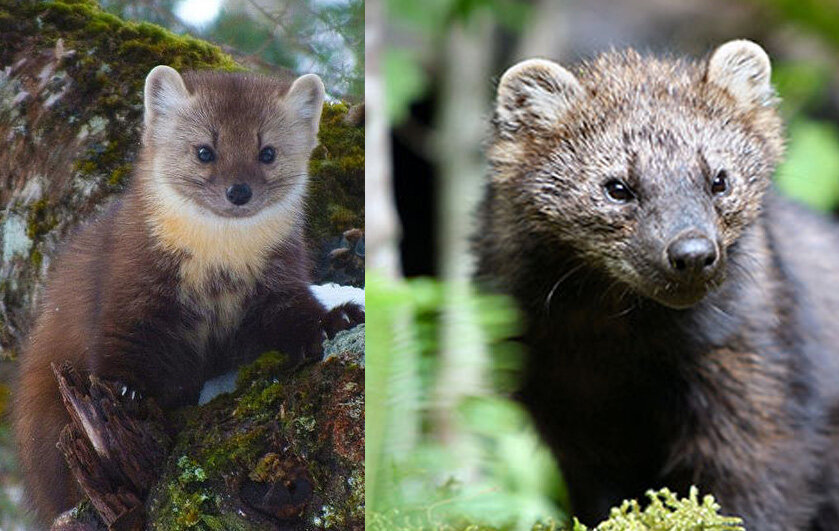As both an experienced wildlife control trapper, and an Associate Certified Entomologist, my interest is always piqued when the worlds of wildlife biology and entomology collide.
Add the assistance of licensed trappers into the mix, and we’re talking borderline sensory overload - in a good way!
Last year, Penn State researchers announced a focus study on the growing problem of sarcoptic mange among the state’s black bear populations. The study has been led by immunologists and entomologists within Penn State's College of Agricultural Sciences, which focuses on bear ecology, bear movement, and the animal’s immune response amid an increasing mange presence.
Part of last year’s study included enlisting the help of Pennsylvania’s fur trapping community - a grouping of citizens who regularly come in contact with common mange vectors such as coyotes and foxes. Researchers have announced a desire to continue working with licensed fur trappers through 2020 to collect viable data on mange-infected furbearers.
Life cycle of Sarcoptes scabiei - showcasing the burrows created by females where eggs are deposited. (Photo | Arlian, 1989)
"Mange is a recurring problem in Pennsylvania but it is occurring at an accelerating and seemingly unprecedented pace in bears," said lead researcher Erika Machtinger, during interviews last year with local media.
"We want to work with the (Pennsylvania) Game Commission to try to figure out what's going on. Different species of skin mites can be found in bears in other states but this severe outbreak of sarcoptic mange is a unique Pennsylvania situation."
Research includes trapping and radio-collaring both healthy and mange-infected bears. As well as taking blood and tissue samples from bears harvested during the regulated PA black bear hunting season.
Mange is a highly contagious skin disease carried by parasitic mites, which results in the loss of insulating hair and fur. Often times emaciation and death are inevitable in infected animals. The mites burrow under the skin and lay larvae. The result is itching and the apparent hair loss in a mammalian host.
In Pennsylvania’s case, bears identified with more than 50 percent hair loss due to the mites are put down, and the carcasses incinerated as the mites will remain alive after a host is dead - which could otherwise lead to potential spread.
(Photo | Machtinger Lab)
The project brings together wildlife biologists, graduate students in entomology, and specialists in the field of arthropod-associated microbial ecology. Researchers hope to determine if the sarcoptes mites responsible for the outbreak have specifically adapted to bears in particular. There are several varieties of sarcoptes mites, including sarcoptes scabei, the hominis variety that infects humans (known as scabies), and the canis variety that commonly infects coyotes and foxes.
According Penn State, the program began in the summer of 2018 with black bear trapping and sample collection. The fall 2018 season included hunter harvest collections and this past winter continued with den surveys.
Erika Machtinger notes that most bears exposed to mites usually have a dermal response, but after the initial reaction their immune system fights the parasites off. This doesn't seem to be the case with sarcoptic mange in Pennsylvania’s bears; putting researchers on edge to find out why.
According to officials, the spread of manage is attributed mostly to artificial feeding - as bears tend to remain solitary except during breeding or in cases of sows with cubs.
Residents with bird-feeders, unsecured trash, or who encourage bear presence on their property by intentionally feeding bears, are likely contributing to the situation. Wildlife officials maintain that citizens should refrain from feeding or unnaturally attracting bears.
Calling All Trappers
Part of the larger study on the sarcoptic mange issue included enlisting the assistance of licensed fur trappers and hunters. To date, skin samples were collected from 14 coyotes and 5 red foxes which exhibited signs of the infection. Researchers are actively investigating immune responses, genetics, and the mite’s burden between canids and bears. Researches have noted that foxes appeared to be more heavily impacted by mange mites than coyotes. Skin biopsy samples were taken to test different levels of hypersensitivity response among different species.
Researchers state that the collection of infected coyotes and foxes will help distinguish differences between mange mites on canids versus those found on bears.
Canine samples also included the collection of blood and fecal samples taken from heartworm-infected coyotes during organized predator hunts, in an attempt to survey parasitic worm burdens on the state’s wildlife populations. The presence of worms, according to researchers, can cause a decline in animal health, which can also affect the quality of fur as well as the animal’s welfare; not to mention potential transmission to domestic pets.
News of Pennsylvania’s hunters and trappers working directly with biologists is the most recent of several current projects involving licensed trappers across the Northeast.
Trappers in Connecticut are assisting the state’s biologists with bobcat study.
Two different Distemper virus research projects in New Hampshire are ongoing, and enlist the cooperation of local fur trappers.
Vermont and New Hampshire are also collaborating with licensed trappers on rabies virus surveillance, which is being spearheaded by USDA-APHIS.
A release shared by the Pennsylvania Trappers Association on behalf of the Penn State researchers states:
With the help and support of trappers and hunters in Pennsylvania, we were able to collect samples from a total of 27 coyotes and 14 foxes. These samples are imperative to wildlife disease surveillance and management. We will continue to collect samples from animals with symptoms of mange until March 2020.
The Veterinary Entomology Lab at Penn State is activley seeking sample collection. Local trappers and hunters seeking to assist should contact Hannah Greenberg at 717-226-7464, or by email: hsg14@psu.edu if infected specimens are captured. Samples must be collected with 48 hours of mortality to ensure presence and collection of mange mites.
Although an interesting topic, the affects of sarcoptic mange in any mammal is usually prolonged and painful. (Photo | Pennsylvania Game Commission)
A red fox exhibiting the advanced stages of sarcoptic mange. (Photo | Pennsylvania Trappers Assoc. Facebook)




















Although closely related to polecats and other members of the weasel family, skunks have recently been re-categorized into their own niche subfamily in the world of North and South American mammals. Those descendants have since evolved into 12 species, most of which may be a common visitor in your backyard depending on where you live.